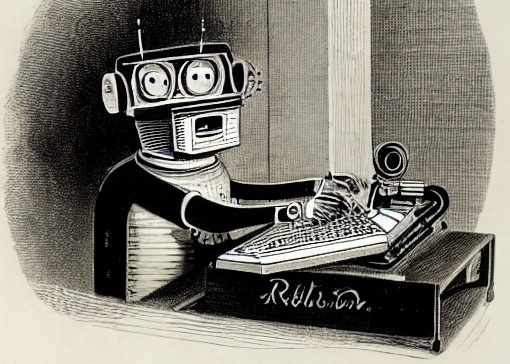
Late January, as I was grappling with my first reporting assignment for the UCSD News and Feature Writing class, I received an email from my husband.
“A mixture of ChatGPT and some editing. Fun. Not sure if [it’s] too much quicker than a full manual approach.” With the help of a chatbot, he wrote a speech praising an art center as a public official.
ChatGPT is a machine-learning system that produces remarkably human like writing. Shortly after its debut, it—along with other generative AI— topped The Atlantic 10 breakthroughs of 2022, having surpassed the powers to reverse death and to synthesize life. The scientific community took notice too, calling the use of this technology inevitable. Barely a month old, ChatGPT has earned an authorship on paper preprint.
As time before my reporting deadline dwindling and my anxiety rising, playing with a chatbot suddenly seemed more interesting. I gave ChatGPT various “reporting” assignments and asked it to write a handful of news stories: scientists discovered a novel anti-cancer drug; local farmer struggled with egg shortage; Russia false-claimed meteor strike as attack from Poland; California state approved massive offshore wind energy. In each case, ChatGPT churned out, in seconds, contents very much like something I’ve read in a newspaper.
What ChatGPT wrote impressed me. But I felt something else crawling under my skin: a sense of revulsion. A light turned on inside me, and it illuminated the road not to take.
The ChatGPT-generated news stories sound like cliché because generating human-like cliché is precisely its greatest strength. It feeds on online content and arranges words according to the frequency they appear together. The majority of news stories are utterly unoriginal and predictable. As Ian Bogost observes: “We are drowning in an ocean of content, desperate for form’s life raft.”
Do I want to contribute to this kind of word soup even more?
Playing the role of a student journalist, on the other hand, has been exciting. My laboratory scientist profession confines my writings to dry technical scripts. This new role has compelled me to look for stories and sparks beneath the seeming banality of day-to-day life. Turning observation and thoughts into stories, however, is more challenging. I can spend hours—sieving through contents, shifting viewpoints, rearranging words.
I write entirely to find out what I’m thinking, what I’m looking at, what I see and what it means.
Joan Didion, Why I Write
That weekend, I attended a Lunar New Years’ celebration hosted by the local library. As my daughter and I were waiting in line for the balloon bunnies, the line was cut abruptly right in front of us; the balloon artist had to leave early. My daughter’s disappointment was hard to console. The lion dance, the Kung Fu performance, the bunny-themed crafts, all suddenly lost their luster.
As we were milling around, I noticed a new line forming by the library door: the librarians just stepped in to save the day! An emergency rescue team formed: a librarian coaching another librarian and two high school volunteers started to make balloon bunnies for the kids who were left out. The bunnies they made did not look professional, but the kids were thrilled. “I think we need a whole course in library school on how to make balloon bunnies,” the librarian said. I jotted her words down quickly.
In the end, I reported on another story for my assignment. A few days later, the local newspaper published its Lunar New Year’s story—the report was as predictable as a mooncake. It didn’t mention the librarians. It didn’t even mention the bunny-themed activities, a tribute to the year of the rabbit—a detail that ChatGPT did not miss.
“I write entirely to find out what I’m thinking, what I’m looking at, what I see and what it means,” wrote Joan Didion. In her writings, she carefully arranges her words. Unlike ChatGPT, her choices are not calculated by common co-occurrences of words. “The arrangement you want can be found in the picture in your mind.”
What is the picture in my mind? I write, to bring it to focus.
* Last update on July 2, 2023.

🤔❤️😊
Love it Minghua🌱it’s the beginning of something great! I hope you continue to write because I’d be online to read it.
Thank you Karolina! Your words give me so much encouragement. ❤️
Love it ❤️ , Minghua! I feel great reading it.
Thank you Dongmei! It’s heartwarming to hear this.
Great article – it addresses a lot of questions I have had!
Thank you Julie!